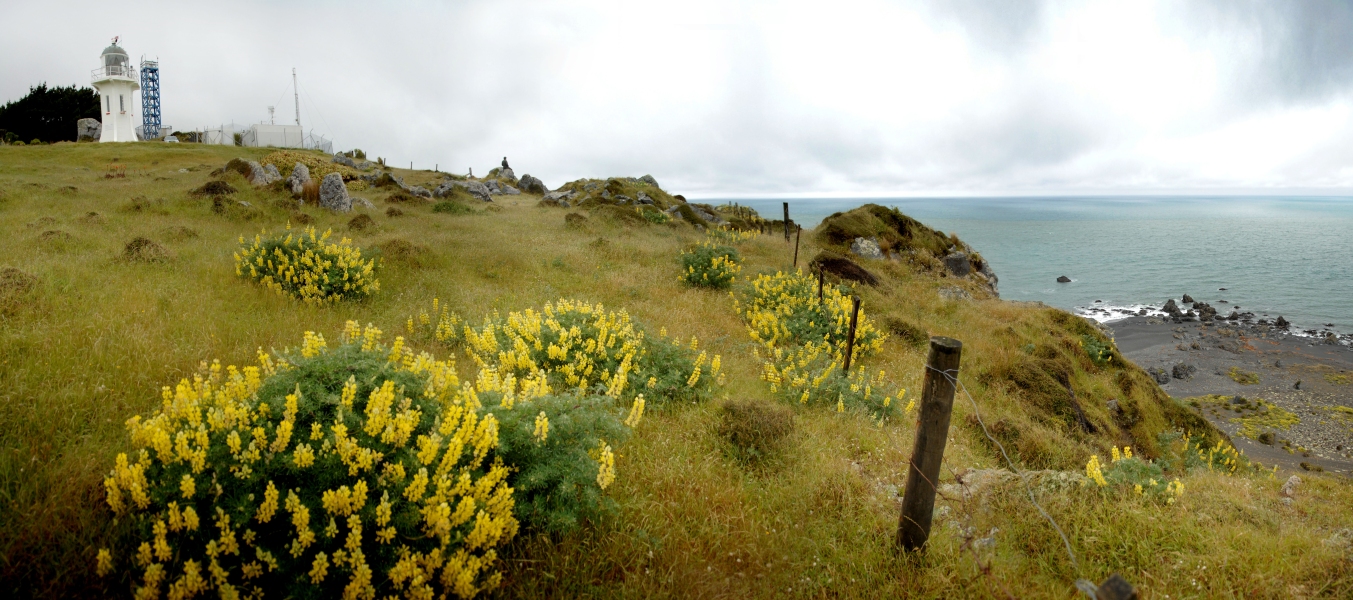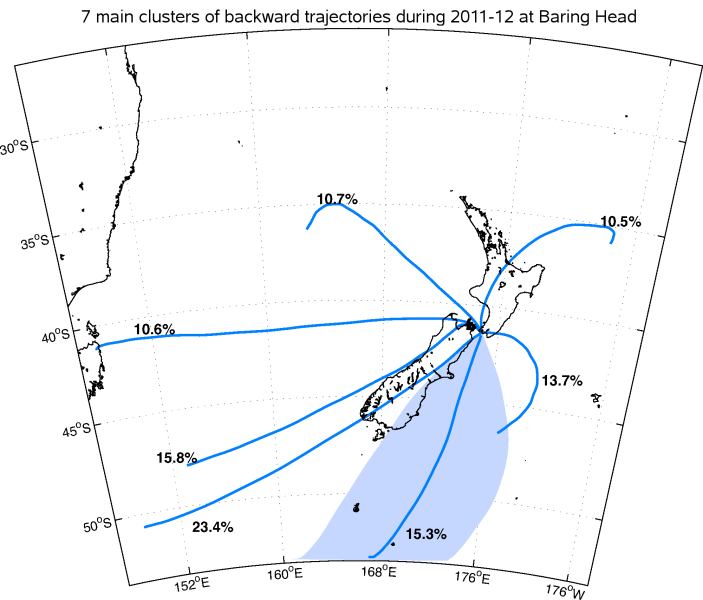Backward trajectory showing the path the air took to arrive at Baring Head
Various meteorological parameters, such as wind speed and direction, air temperature and relative humidity are also measured at Baring Head. These parameters play an important role in helping to interpret the trace gas measurements.
Back trajectories, which describe the path followed by an air parcel backward in time, are another useful tool for interpreting the trace gas measurements since they provide information on the long-range transport to the measurement site. The image shows the results of a clustering analysis on 4-day back trajectories for air arriving at Baring Head. The blue lines show the path of the mean trajectory for each cluster, and the percentage of trajectories in each cluster is noted. The blue shaded area shows the envelope of all trajectories in the southerly cluster. Southerly and southeast arriving trajectories occur about 30% of the time.


